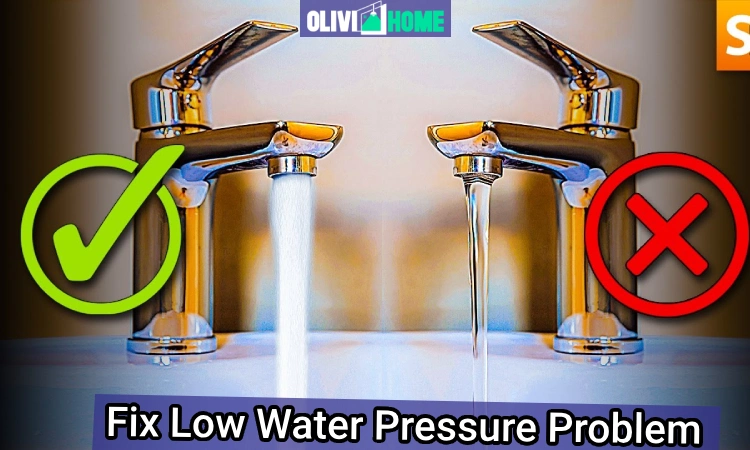Low water pressure can be a frustrating issue that disrupts daily routines, from taking showers to doing dishes. Whether it’s a slow trickle from your faucet or a weak spray from your showerhead, understanding the causes and solutions can help you restore normal water flow. Let’s explore the common reasons behind low water pressure and how to fix them effectively.
Understanding the Symptoms of Low Water Pressure
Low water pressure is easy to spot. Faucets may release only a weak stream of water, appliances like dishwashers or washing machines take longer to fill, or your shower feels more like a drizzle than a spray. These symptoms often point to an underlying issue that needs attention.
One way to confirm low water pressure is by using a pressure gauge. Attach it to an outdoor spigot, turn on the valve, and check the reading. Normal residential water pressure typically ranges between 30 and 80 psi. If your reading falls below this range, it’s time to investigate further.
Common Causes of Low Water Pressure
Several factors can contribute to low water pressure in your home. Identifying the root cause is key to finding the right solution.
1. Clogged Pipes or Fixtures
Mineral buildup, especially in areas with hard water, can clog pipes and fixtures over time. This reduces the diameter of the pipes, restricting water flow. Showerheads and faucet aerators are particularly prone to clogs.
Solution: Clean clogged fixtures by soaking them in vinegar or replacing them if necessary. For clogged pipes, consult a plumber who can clear blockages or replace severely affected sections.
2. Corroded Pipes
Older homes with galvanized steel pipes are at risk of corrosion, which narrows the pipe’s interior and reduces water flow. Over time, rust flakes can also contribute to clogs.
Solution: If corrosion is widespread, replacing old pipes with modern materials like copper or PEX is often necessary.
3. Leaks in the Plumbing System
Leaks allow water to escape before it reaches your faucets, leading to lower pressure throughout your home. Signs of leaks include damp spots on walls or ceilings and unexplained increases in your water bill.
Solution: Inspect visible pipes for moisture or pooling water. For hidden leaks, hire a professional plumber who can use tools like video drain inspection to locate and repair them.
4. Partially Closed Valves
The main shut-off valve or other control valves in your home may not be fully open, restricting water flow.
Solution: Check all valves to ensure they are fully open. For gate valves, turn them counterclockwise until they no longer turn; for ball valves, align the handle with the pipe.
5. Faulty Pressure Regulator
A pressure regulator ensures that water enters your home at a safe level. If it malfunctions, you may experience either excessively high or low pressure.
Solution: Test your regulator using a pressure gauge. If it’s faulty, have it repaired or replaced by a professional plumber.
6. High Water Demand
Using multiple appliances or fixtures simultaneously can strain your home’s water supply system, causing temporary drops in pressure.
Solution: Stagger your household’s water usage throughout the day or consider upgrading your plumbing system if high demand is frequent.
7. Municipal Supply Issues
Sometimes, the problem isn’t within your home but with the municipal supply line. Maintenance work or high demand in your area can lower pressure temporarily.
Solution: Contact your local water supplier to confirm if there are ongoing issues affecting your neighborhood.
How to Fix Low Water Pressure
Once you’ve identified the cause of low water pressure, you can take steps to resolve it effectively.
Clean Fixtures and Pipes
For minor clogs in faucets or showerheads, remove them and soak in vinegar to dissolve mineral deposits. If mineral buildup affects your pipes, flushing them out may help temporarily; however, installing a water softener can prevent future clogs.
Repair Leaks Promptly
Leaks not only waste water but also lower pressure significantly. Even small cracks in pipes can cause noticeable drops in flow rate. Use leak detection methods like monitoring your meter reading when no water is being used.
Replace Old or Corroded Pipes
If corrosion is reducing your pipe diameter and causing leaks, replacing outdated piping materials is essential for restoring proper flow. This is an investment that will improve both functionality and longevity.
Adjust or Replace Pressure Regulators
Pressure regulators that fail may need recalibration or replacement altogether. A professional plumber can ensure that your regulator is set correctly for optimal performance.
Install a Booster Pump
If municipal supply issues persist despite no internal problems in your plumbing system, installing a booster pump can increase incoming pressure from the main supply line. This solution is especially useful for homes located at higher elevations.
Preventing Future Water Pressure Problems
Prevention is always better than cure when it comes to maintaining healthy water pressure levels:
- Regularly clean fixtures like showerheads and faucet aerators.
- Install a whole-house filtration system if you live in an area with hard water.
- Schedule routine inspections for older plumbing systems.
- Monitor valves and regulators periodically to ensure they’re functioning properly.
- Address leaks immediately before they escalate into larger issues.
Final Thoughts
Low water pressure doesn’t have to disrupt your life indefinitely. By understanding its causes—whether it’s clogged pipes, corroded plumbing, leaks, or municipal issues—you can take targeted steps to resolve it effectively. Remember that some fixes are simple DIY tasks while others require professional intervention.
Restoring strong and steady water flow not only improves daily convenience but also protects your plumbing system from long-term damage. With proper maintenance and timely repairs, you’ll enjoy consistent water pressure for years to come!

